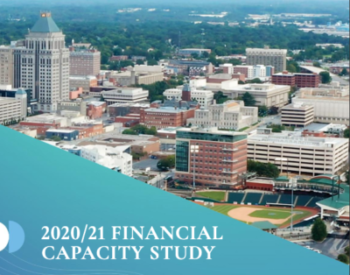The 2020/2021 Financial Capacity report recently released by Action Greensboro begins with a lot of good things about living in Greensboro and Guilford County but then details a number of disturbing trends.
The Greensboro City Council talks about the need to attract new good paying jobs to the city, but according to the report Guilford County is far behind most peer counties, the state and the nation in job growth from 2008 to 2018.
During that period Guilford County had 10 percent job growth while the US had 15.2 percent and the state of North Carolina had 17.7 percent. Durham County had 18 percent job growth during the same time period, which pales in comparison to Mecklenburg County which had 33 percent and Wake County that had 33.2 percent. The only peer county listed that had lower job growth than Guilford was Forsyth with 8.5 percent.
In average wages in 2019 Guilford even falls behind Forsyth County. The average wage in Guilford was $49,724 and Forsyth was $52,322, which is slightly below the average for North Carolina at $52,384 but is far below Durham at $71,555, Mecklenburg at $68,421, Wake at $61,425 and even the US at $59,219.
Greensboro and Guilford County depend on property taxes as a primary source of revenue. The amount of revenue from property taxes can be increased by raising the tax rate and/or by increasing the value of the tax base. Development can greatly increase the value of the tax base and here again Guilford County has fallen behind most peer counties in the state in the increase in the value of the tax base.
From 2010 to 2019 Guilford County saw an increase in the value of all the property in the county of 14.4 percent, which was better than Forsyth at 8.2 percent but far below Mecklenburg at 30 percent, Durham at 28.6 percent and Wake at 24.7 percent.
An area in which Guilford County by some measures does lead the pack is in poverty. One measure of that is the number of clients of Medicaid and the Children’s Health Insurance Program (CHIP). From 2013 to 2019 Guilford County saw an increase of Medicaid and CHIP clients of 43 percent, Wake 40.8 percent, Mecklenburg 31.9 percent, Forsyth 29.4 percent and Durham 22.8 percent.


Let’s stamp out poverty. Give’em more free stuff!
Thanks to those that voted for the current city and county leaders.
Indeed! Keep voting the same people, or like minded ones into office, and the city and county will remain behind.
poor leadership=bad statistics.
But folks-keep voting for them-lets see how far down it can go.
Is anyone shocked? Our leaders do nothing to attract business and jobs to our community. They live in an alternate reality where building an Amphitheatre, Olympic competitive swimming pools and Performing Arts Centers are the way to future prosperity. Those cute entertainment facilities do create minimum wage jobs but our youth and future leaders continue to leave for Raleigh and Charlotte and other cities where they can work and earn a living that will move them into a much better economic lifestyle. Not quite sure how these entertainment facilities will survive when the population continues to become more and more economically depressed. Oh, that’s right, we will raise their taxes. What was I thinking…..
Yes, but that won’t stop this council from giving away our tax dollars to various “community” groups and non-profits (aka, Yvonne).
It’s tough back on the hind teat
Whether anyone wants to believe it or not, the Greensboro City Council is greatly responsible for this poor financial report. Without good quality white men with good experience in business making decisions that benefit ALL citizens Greensboro will never improve in a positive manner. Greensboro is in a negative state of operation and will continue until we have a better group making decisions for ALL citizens
Racist much Martin?
Chris I bet you have a very colorful flag in your yard
The very colorful Red White and Blue. What flag do you fly Will? The flag from the losing army of long ago?
Your red white and blue along with pink and purple make a great rainbow
Well well…I certainly hope our “leaders” are paying attention to what others are saying and reading about our fair city. Facts matter.
Bet we are first in panhandling though
I have no doubt that Greensboro is the ONLY City without a single WHITE MAN on the City Council.
Mask mandates, vaccine mandates, shutdown of small businesses, firing people for no vaccines. Then they complain about the employment rate and tax base. It’s insane.